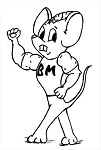» Site Navigation

0 members and 811 guests
No Members online
Most users ever online was 47,180, 07-16-2025 at 05:30 PM.
» Today's Birthdays

» Stats

Members: 75,900
Threads: 249,095
Posts: 2,572,066
Top Poster: JLC (31,651)
|
-
Registered User


Anyone know a good resource on rat genetics?
So, I started breeding feeder rats for two reasons:
1. Food
2. Because pythons take so long to do what they do, breeding rats quells my extreme impatience.
I love getting new color combos, but I have no idea how they happen!
I have two breeder male rats and a few females, but every now and again, something bizarre (like a solid gray rat from a black x tan hooded pairing) will pop up. And I have no clue why.
Does anybody have a good resource on rat genetics?
-
-
http://www.afrma.org/ratgenpart1.htm
It's quite the read, but very informational 
-
-
Registered User


-
-
Most rat colors are recessive. You'll be able to find a few different resources, but here's a quick run down (I don't have time at the moment to look up the resources):
Black (designated "a") recessive to Agouti (designated "A")
Recessive colors:
- Russian blue (heathered gray rat, designated "d" in the US, "rb" in the UK)
- American or British blue (gray rat, often with white undercoat, has a number of different names, designated "g" in the US, "d" in the UK)
- Mink (brown or grayish rat, prone to "rusting" and greatly affected by modifiers, designated "m")
- Beige/Buff (beige/tan colored rat, variable coloration, eyes may be ruby to almost black designated "r")
- Champagne (lighter tan or apricot colored rat, eyes pink or red, designated "p")
- Chocolate (chocolate brown color, very uncommon in the US and most likely to only come from known bloodlines, designated "b")
The above colors are all their own separate genes on separate loci. They can be combined to make new colors. The dominant gene for each of those defaults to black or agouti. Each of those colors can also be combined with agouti, which will give a ticked version of the described color.
Color patterns:
- Siamese - beige/offwhite with colored points and shading, can be combined with above colors, pink or red eyes, double recessive gene (designated "c^h"), allelic with albino
- Himalayan - white with colored points, can be combined with above colors, incomplete recessive gene (for lack of a better phrase at the moment, one "c^h" and one "c" gene makes Himalayan)
- Albino - white with red or pink eyes, double recessive (designated "c"), allelic with Siamese
- Merle - only visible when combined with mink (can also be combined with other colors), darker splotches resembling a merle dog, codominant
- Pearl - only visible when combined with mink (can also be combined with other colors), white or offwhite base to colored hairs, codominant, thought to be homozygous lethal
- Burmese - only visible when combined with colorpoint (Siamese or Himalayan), brown with darker points, can be combined with other colors to give different shades, codominant
- Black-eyed colorpoint - only visible when combined with colorpoint, changes red or pink eyes to black, dominant
White markings are highly variable and may be recessive, codominant, or dominant. Many are on the H-locus. Others are "dominant spotting" genes associated with megacolon. Blazes and headspots, contrary to popular belief, can be associated with either or both of these classes of markings. There are a few other colors and patterns I can't remember off hand.
In a nutshell, rat color genetics work much like ball python genetics. Recessive genes must be visible to have a 100% chance of passing on the gene. A 100% het for a recessive gene has a 50% chance of producing a visual when bred with a visual, or a 25% chance of producing a visual when bred with another 100% het. Codominant animals have a 50% chance of producing another codom, unless in the super form in which case 100% of the offspring will be codominant (also a chance of supers if bred to a codom, or 100% supers if bred to another super). Dominant traits are inherited in a similar manner to codom, except they will be visual whether homozygous or heterozygous. Clear as mud? 
Why keep a snake? Why keep any animal? Because you enjoy the animal, find something beautiful and fascinating about it, and it fits seamlessly into your lifestyle.
-
 Posting Permissions
Posting Permissions
- You may not post new threads
- You may not post replies
- You may not post attachments
- You may not edit your posts
-
Forum Rules
|









 Reply With Quote
Reply With Quote

